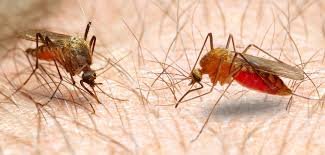Authors get paid when people like you upvote their post.
If you enjoyed what you read here, create your account today and start earning FREE STEEM!
If you enjoyed what you read here, create your account today and start earning FREE STEEM!
 )
Even in the past, people recognized that there must be some connections between malaria and swamps, and some believed that insects living near swamps might be the carrier of the disease. The Romans drained the swamps and reduced the mosquito population. This was the best method used for the next fifteen centuries. 
Even in the past, people recognized that there must be some connections between malaria and swamps, and some believed that insects living near swamps might be the carrier of the disease. The Romans drained the swamps and reduced the mosquito population. This was the best method used for the next fifteen centuries.  ) The Shrinking malaria map
) The Shrinking malaria map )
)